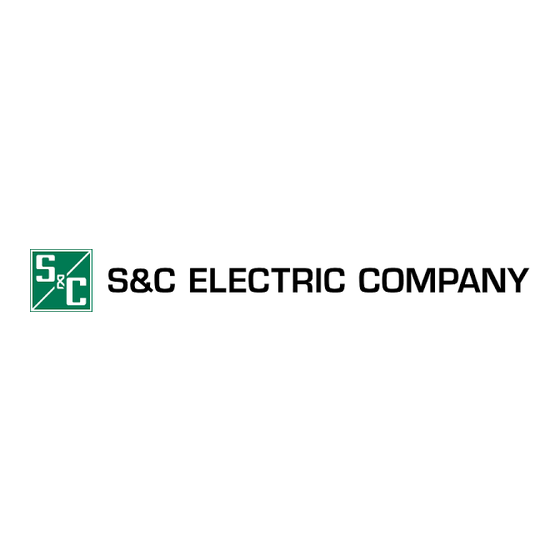

S&C 5800 Series Troubleshooting Manual
Automatic switch control
Hide thumbs
Also See for 5800 Series:
- Installation manual (38 pages) ,
- Instruction sheet (40 pages) ,
- Operating instructions manual (40 pages)
Table of Contents
Advertisement
S&C 5800 Series Automatic Switch Control
Table of Contents
Section
Qualified Persons . . . . . . . . . . . . . . . . . . . . . . . . . . .2
Read this Instruction Sheet . . . . . . . . . . . . . . . . . . .2
Retain this Instruction Sheet . . . . . . . . . . . . . . . . . . .2
Warranty . . . . . . . . . . . . . . . . . . . . . . . . . . . . . . . . . .2
Understanding Safety-Alert Messages . . . . . . . . . . .3
Following Safety Instructions . . . . . . . . . . . . . . . . . . .3
Replacement Instructions and Labels . . . . . . . . . . . .3
®
Applicable Software . . . . . . . . . . . . . . . . . . . . . . . . . .4
Troubleshooting Overview . . . . . . . . . . . . . . . . . . . . .5
Power Problems . . . . . . . . . . . . . . . . . . . . . . . . . . . .6
LCD Problems . . . . . . . . . . . . . . . . . . . . . . . . . . . . .6
July 5, 2011 © S&C Electric Company
Troubleshooting
Page
Section
Starting IntelliLINK . . . . . . . . . . . . . . . . . . . . . . . . . . .9
Miscellaneous Problems . . . . . . . . . . . . . . . . . . . . .12
Using IntelliLINK to Locate Problems . . . . . . . . . . .14
Event Status . . . . . . . . . . . . . . . . . . . . . . . . . . . . . .16
Chronological Log . . . . . . . . . . . . . . . . . . . . . . . . . .20
Control and Switch Information . . . . . . . . . . . . . . . .20
Switch Operations . . . . . . . . . . . . . . . . . . . . . . . . . .22
Communications . . . . . . . . . . . . . . . . . . . . . . . . . . .24
Various Counters . . . . . . . . . . . . . . . . . . . . . . . . . . .27
Receive Interrupt Counts . . . . . . . . . . . . . . . . . . . . .28
Application Layer Counts . . . . . . . . . . . . . . . . . . . . .29
Data Link Layer Counts . . . . . . . . . . . . . . . . . . . . . .30
Battery System . . . . . . . . . . . . . . . . . . . . . . . . . . . .31
Instruction Sheet 1041-550
Page
Advertisement
Table of Contents
Troubleshooting











Need help?
Do you have a question about the 5800 Series and is the answer not in the manual?
Questions and answers